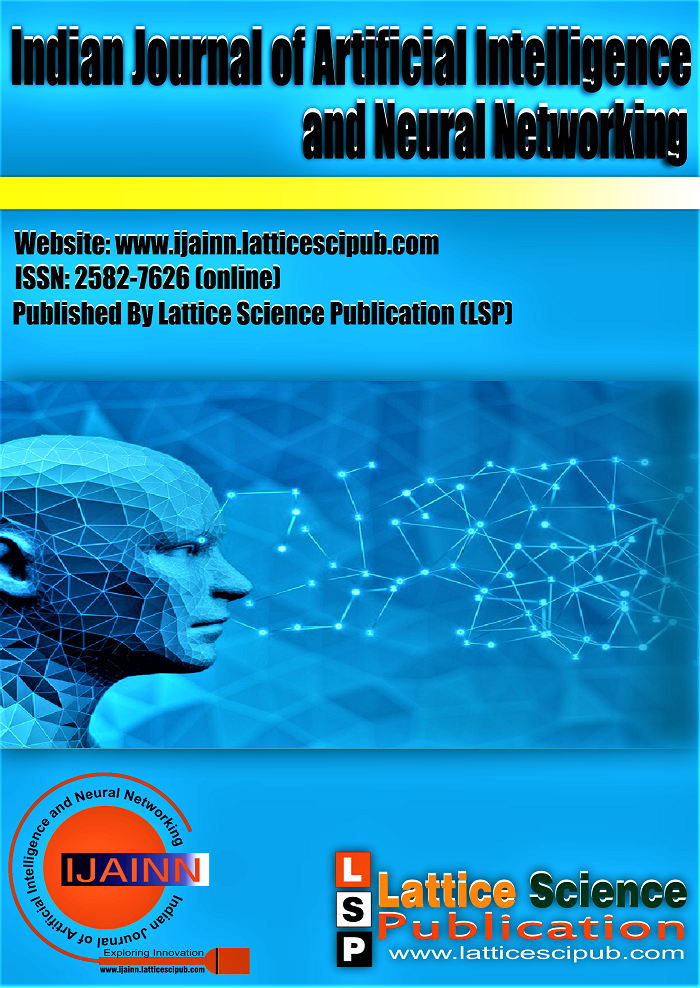K-Nearest Neighbor Based URL Identification Model for Phishing Attack Detection
Main Article Content
Abstract
Phishing causes many problems in business industry. The electronic commerce and electronic banking such as mobile banking involves a number of online transaction. In such online transactions, we have to discriminate features related to legitimate and phishing websites in order to ensure security of the online transaction. In this study, we have collected data form phish tank public data repository and proposed K-Nearest Neighbors (KNN) based model for phishing attack detection. The proposed model detects phishing attack through URL classification. The performance of the proposed model is tested empirically and result is analyzed. Experimental result on test set reveals that the model is efficient on phishing attack detection. Furthermore, the K value that gives better accuracy is determined to achieve better performance on phishing attack detection. Overall, the average accuracy of the proposed model is 85.08%.
Downloads
Article Details

This work is licensed under a Creative Commons Attribution-NonCommercial-NoDerivatives 4.0 International License.
How to Cite
References
AlMaha Abu Zuraiq, Mouhammd Alkasassbeh, Review: Phishing Detection Approaches, IEEE, 2019. [CrossRef]
Che-Yu Wu, Cheng-Chung Kuo, Chu-Sing Yang, A Phishing Detection System based on Machine Learning, International Conference on Intelligent Computing and its Emerging Applications, IEEE, 2019.
A. K. Shrivas, Ramkishun Suryawanshi, Decision Tree Classifier for Classification of Phishing Website with Info Gain Feature Selection, International Journal for Research in Applied Science & Engineering, 2017.
Adwan Yasin, Abdelmunem Abuhasan, An intelligent classification model for phishing email detection, International Journal of Network Security & Its Applications, 2016. [CrossRef]
Weiping Wang, Feng Zhang, Xi Luo, Shigeng Zhang, PDRCNN: Precise Phishing Detection with Recurrent Convolutional Neural Networks, Hindawi Security and Communication Networks Volume 2019. [CrossRef]
Ping Yi, Yuxiang Guan, Futai Zou, Yao Yao, Wei Wang, Ting Zhu Web Phishing Detection Using a Deep Learning Framework, Hindawi Wireless Communications and Mobile Computing Volume 2018. [CrossRef]
Mouad Zouina, Benaceur Outtaj, A novel lightweight URL phishing detection system using SVM and similarity index, Zouina and Outtaj Hum. Cent. Comput. Inf. Sci, 2017. [CrossRef]
Ch. Chakradhara Rao, A. V. Ramana, Detection of Phishing Websites Using Hybrid Model, JOURNAL OF ADVANCEMENT IN ENGINEERING AND TECHNOLOGY, 2018.
Vamsee Muppavarapu, Archanaa Rajendran, Shriram Vasudevan, Phishing Detection using RDF and Random Forests, The International Arab Journal of Information Technology, Vol. 15, No. 5, September 2018.
T. A. Assegie, Bizuneh H. D., Improving network performance with an integrated priority queue and weighted fair queue scheduling, Indonesian Journal of Electrical Engineering and Computer Science, vol. 19, no. 1, pp. 241-247, July 2020, doi: 10.11591/ijeecs.v19.i1.pp241-247. [CrossRef]
Bayu Adhi Tama, Kyung Hyune Rhee, A Comparative Study of Phishing Websites Classification Based on Classifier Ensembles, Journal of Multimedia Information System VOL. 5, NO. 2, June 2018.
Abdulhamit Subasi, Esraa Molah, Fatin Almkallawi, Touseef J. Chaudhery, Intelligent Phishing Website Detection using Random Forest Classifier, International Conference on Electrical and Computing Technologies and Applications, IEEE, 2017.
Assegie, T.A, Software defined network emulation with OpenFlow protocol, International Journal of Advances in Applied Sciences (IJAAS), vol. 9, no. 1, pp. 70-76, March 2020, doi: 10.11591/ijaas.v9.i1.pp70-76. [CrossRef]
Altyeb Altaher, Phishing Websites Classification using Hybrid SVM and KNN Approach, International Journal of Advanced Computer Science and Applications, Vol. 8, No. 6, 2017. [CrossRef]
Nur Sholihah Zaini, Deris Stiawan, Mohd Faizal Ab Razak, Ahmad Firdaus, Wan Isni Sofiah Wan Din, Shahreen Kasim, Tole Sutikno, Phishing detection system using machine learning classifiers, Indonesian Journal of Electrical Engineering and Computer Science Vol. 17, No. 3, March 2020. [CrossRef]
Nur’Ain Maulat Samsudin, Cik Feresa binti Mohd Foozy, Nabilah Alias, Palaniappan Shamala, Nur Fadzilah Othman, Wan Isni Sofiah Wan Din, Youtube spam detection framework using naïve Bayes and logistic regression, Indonesian Journal of Electrical Engineering and Computer Science Vol. 14, No. 3, June 2019. [CrossRef]
Assegie, T.A., Nair, P.S, A review on software defined network security risks and challenges, TELKOMNIKA, Vol.17, No.6, December 2019, pp.3168~3174. [CrossRef]
Abhishek Kumar, Jyotir Moy Chatterjee, Vicente García Díaz, A novel hybrid approach of SVM combined with NLP and probabilistic neural network for email phishing, International Journal of Electrical and Computer Engineering (IJECE) Vol. 10, No. 1, February 2020. [CrossRef]
Assegie, T.A., Nair, P.S, Comparative Study on Methods Used in Prevention and Detection Against Address Resolution Protocol Spoofing Attack,” Journal of Theoretical and Applied Information Technology, vol. 97, no. 16, August 2019.





